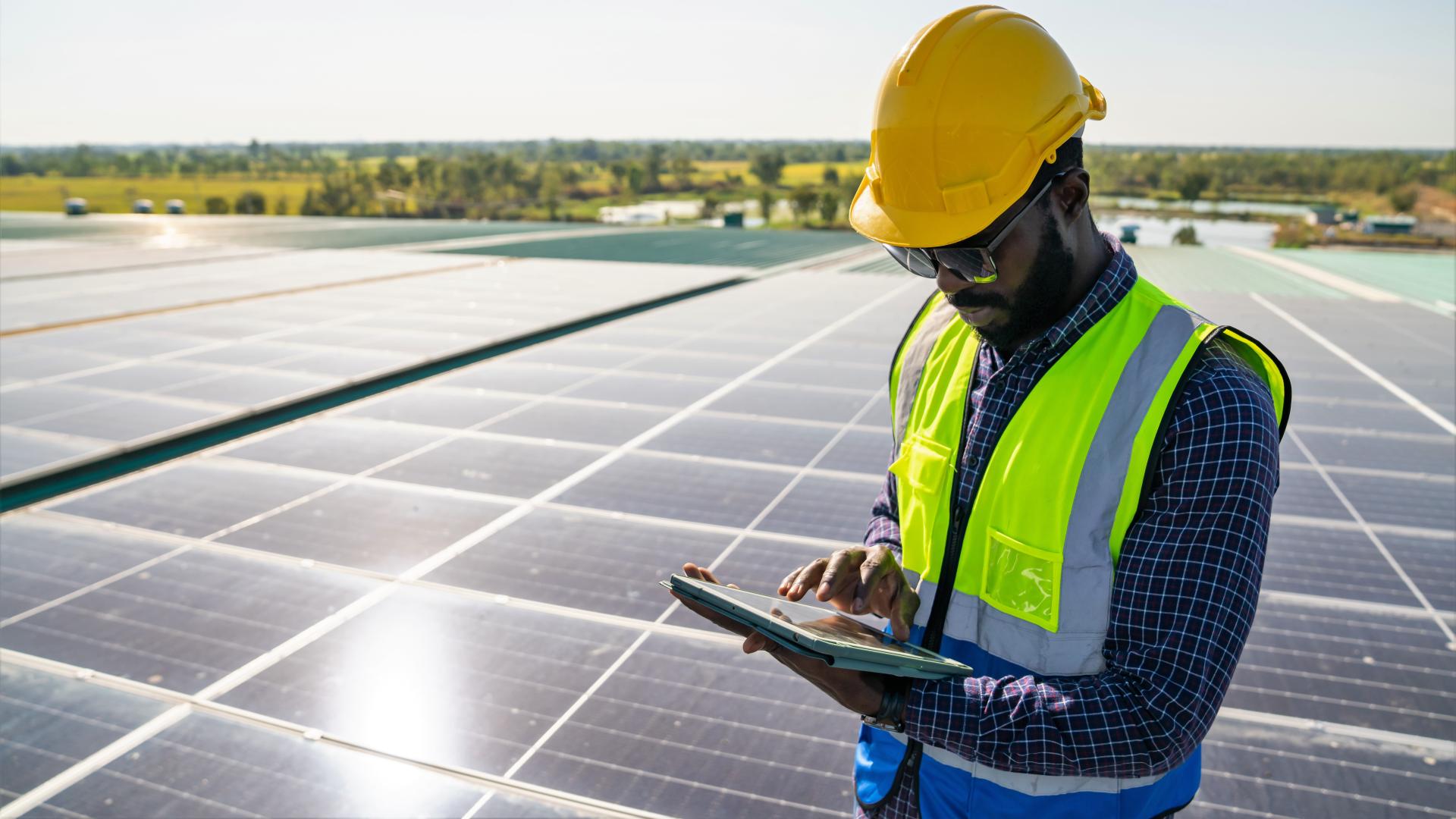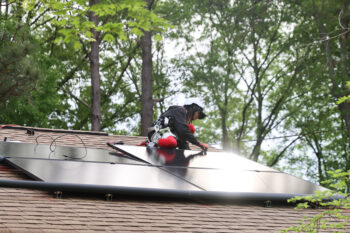Flipping the Script on the Public Health and Wealth-Building Benefits of Clean Energy

The United States is entering a new era powered by abundant, low-cost clean energy. By 2030, solar energy can meet 30% of U.S. electricity generation while creating $100 billion of annual economic investment and supporting one million family-sustaining jobs. This vision is achievable, but without attention and action, historical injustices in America’s energy sector will continue.
While the last two centuries of industrialization have been prosperous for some, many have been left on the sidelines. When it comes to energy, communities at the frontlines of climate, environmental, economic and social injustices have been bearing the brunt for decades. Proximity to dirty power stations and other polluting industrial facilities has disproportionately harmed the health of marginalized groups while the wealth generated from these industries flows elsewhere.
This new era of clean energy growth is an opportunity to flip the script.
Here are a few ways the growing clean energy economy can drive health benefits and new opportunities to build wealth in communities that have thus far been left out of the clean energy boom.
Energy Cost Savings of Rooftop Solar
Energy poverty is more common in the United States than you might think. According to the U.S. Energy Information Administration, in 2020 one-quarter of all American households reported reducing or forgoing purchases of food or medicine in order to cover their energy costs. This year, even more families will feel the squeeze as the cost of energy services is up nearly 20% from last year, largely due to volatility in natural gas prices. The burden of these rising prices will disproportionately impact low-income, Black, Hispanic and Native American households, who spend the largest portions of their income on energy bills.
Solar and storage offers an affordable, stable and resilient solution for these families. Households that install rooftop solar or solar and storage can see significant savings on their monthly energy bills, and clean energy is more accessible than ever with the 10-year extension of the 30% solar Investment Tax Credit and other provisions in the Inflation Reduction Act. There are many financing options that can slash upfront costs for going solar, and renters or Americans living in multi-family housing can also save on their electricity bills by subscribing to a community solar project.
Energy prices are a point of stress for many Americans today, especially for the nation’s most vulnerable households. Solar can ease this burden and make energy costs and savings a lot more predictable.
Cleaner Energy, Cleaner Air
The link between power plant placement and disadvantaged communities is well-established, leaving frontline groups, particularly communities of color, to suffer the dangerous health impacts of polluted air. The good news is that electricity generated from solar is 100% emissions-free and is now one of the most affordable forms of electricity generation on the grid.
Solar accounts for 4.5% of electricity generation today with 135 gigawatts of capacity installed. This growing energy market is reducing carbon emissions by 151 million metric tons annually, which is the equivalent to taking 33 million vehicles off the road.
The Solar Energy Industries Association (SEIA) aims for solar to meet 30% of U.S. electricity needs by 2030. Clean energy at this scale will have a dramatic impact on air quality and the health of people in cities and towns nationwide.
Climate Resilience
Climate change disproportionately hits disadvantaged communities the hardest, as flooding, heat waves, and power outages lay bare our nation’s historic underinvestment in infrastructure that serves frontline communities. There is now a greater opportunity to ensure historically disadvantaged communities access resilient infrastructure, helping to insulate them from the worst impacts of the climate crisis.
Energy storage systems are a critical tool for resiliency. Back-up power can ensure that homes stay at comfortable temperatures, preserve food supplies and connect residents to outside help and even their jobs, keeping daily life in order and the local economy going. Storage systems can also connect to neighborhood microgrids and virtual power plants, helping to power and protect entire communities.
The most important benefit of solar is that its deployment is critical to mitigating climate change. The power sector is a massive contributor to global emissions, and the rapid scale up of solar and storage by 2030 can slash electricity sector emissions by 35%.
Jobs and Economic Prosperity
Over the past decade, the solar industry has more than doubled in size. The solar and storage sector provides well-paying careers to more than 255,000 Americans and supports 10,000 U.S. companies — 90% of which are small businesses — across all 50 states.
These job, business, and other wealth-building opportunities must be open to all Americans, especially those in disadvantaged communities. The United States needs to add hundreds of gigawatts of solar and grow the industry to 1 million workers to reach its clean energy goals, and the Inflation Reduction Act will help to jumpstart this progress. The law contains several provisions that can drive investment in communities of color and underserved communities, but the injustices of the current energy system will persist if the implementation of these programs is delayed or misguided, or does not include the leadership of frontline communities.
Every single American can prosper in this new energy era and it’s on all of us to help make this a reality.


